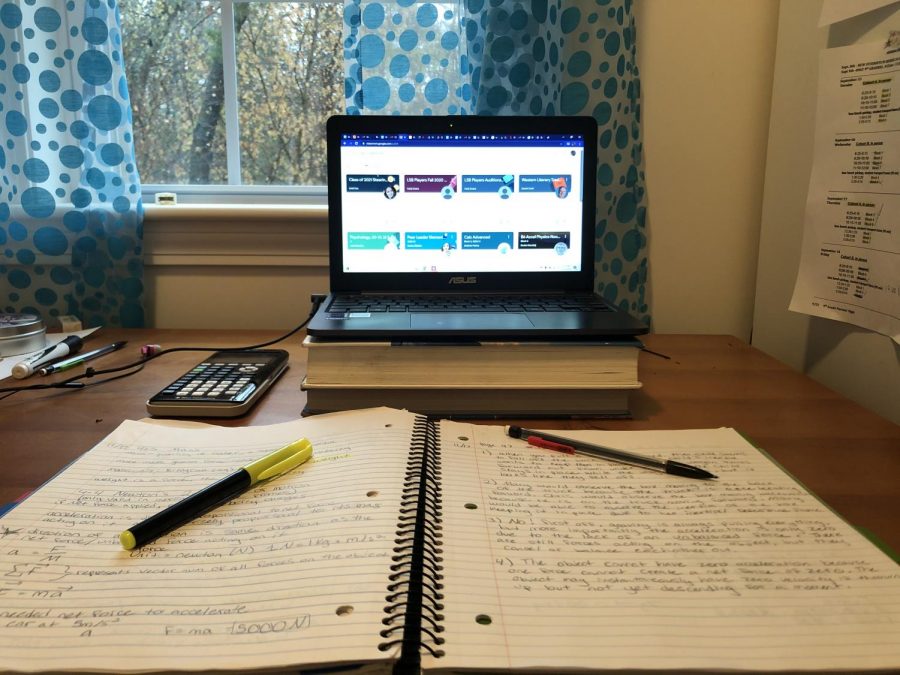Midterms Comparison: 2020 vs 2022
Studying for a Midterm
Going into midterms this year, a lot of us didn’t know what to expect. For some people, it was their first-ever cumulative exam. Others who had taken prior exams did not know how this one would compare. When students received the email with the new schedule, it looked like a lot more added stress was going to be added on to midterms week. In years past, midterms were set up with one exam per day. This new schedule was structured with two exams per day, meaning less time to study for each exam. Even though midterms were technically shortened from a 2-hour exam to a 1-hour exam, and also weighed slightly less, the exams were still cumulative, meaning students still had to study material ranging from September to January.
Freshmen and sophomores, who went into this whole exam week not knowing what to expect, overall thought that the exams provided a lot of stress. Freshman Kenzie Gabel says, “I felt that the teachers were trying to make a compromise with the stress level that the students are experiencing by having the midterms be less material or not worth as many points to your overall grade,” however, she concluded that it wasn’t executed that way. She says she felt “more stress not really knowing what I was going into two weeks before midterms were going to happen. Especially because it was my first time taking a test that reviews everything I’ve learned in a year.” Gabel concludes that she doesn’t know how a normal midterm would be, but overall this model was very stressful going into blind. Sophomore Cassie Albert says that she “felt that midterms this year were made to take a lot of stress off the students,” but that she still was studying the same amount of material she would have been, just for a lower percent of her grade. She says she “doesn’t know what normal midterms are like, but I felt a very high level of stress regarding the studying and grading of my midterms.” Overall it seems that underclassmen feel that there was a lot of pressure and unnecessary stress added to midterms week this year.
On the other hand, there were people who hadn’t taken a cumulative exam since 2020. For those who do not know, the normal midterms schedule was set up for one exam a day. This schedule was not by block number, it was by subject. There were four days dedicated to midterms: science, math, language, and history. Junior Aidan Downer explains that “they seemed as if they would be easier and less stressful than past years, as the exams would be shorter and less impactful on our grade.” However, that was not the case. “I did not find it to be that way. With two class periods assigned each day, I found that I was having to cram studying in for two classes each night, whereas in freshman year we only had to worry about one test per day. Due to having to attempt to jog our brains on 4 months of material for two classes most nights, I felt that midterms were more stressful and just as hard as in freshman year.” Downer feels that giving 2 exams per day was putting a lot of pressure on students and adding negative stress. Senior Morgan Bleakley has experience two years of a normal midterm schedule. She felt that “midterms this year were much better than freshman year. I felt that my stress level was much lower and the tests were much more manageable, mostly because the weight of the tests were much lower.” Bleakley’s schedule was set up so that she only had one test per day which gave her a good amount of time to prepare for them. Although Bleakley lucked out with her schedule, she does feel that it is unfair to give two tests per day.
Considering student’s opinions from varying grade levels, it seems that the biggest stressor of midterms was having 2 exams per day. It also seems like bringing down the weight and length of each exam relieved stress for most students. Looking ahead to finals and following years, it would be nice to see exam weeks evolve to a 1 test per day schedule and shorter, less impactful exams.


